|
|
| Sei in: Cinema e Medioevo ® Indice alfabetico dei film |
NOTRE DAME
(The Hunchback of Notre Dame)
1939, regia di William Dieterle
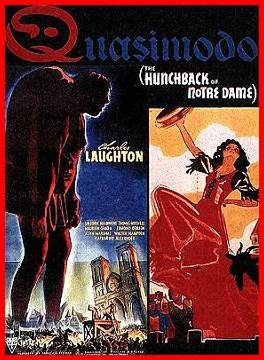

Scheda: Nazione: USA - Produzione: RKO Radio Pictures Inc. - Distribuzione: Eden Video, CDE Home Video, RKO Pictures, Turner Home Video - Soggetto (dal romanzo Notre-Dame de Paris di Victor Hugo): Bruno Frank - Sceneggiatura: Sonya Levien, Bruno Frank - Fotografia: Joseph H. August - Montaggio: William Hamilton, Robert Wise - Scenografie: Van Nest Polglase - Costumi: Walter Plunkett - Musiche: Alfred Newman - Effetti speciali: Vernon L. Walker - Formato: B.N. - Durata: 117'.
Cast: Charles Laughton, Cedric Hardwicke, Thomas Mitchell, Maureen O'Hara, Edmond O'Brien, Alan Marshal, Walter Hampden, Harry Davenport, Katharine Alexander, George Zucco, George Tobias, Fritz Leiber, Minna Gombell, Etienne Girardot, Arthur Hohl.
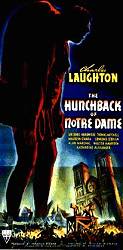
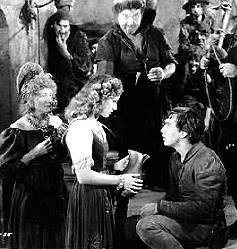

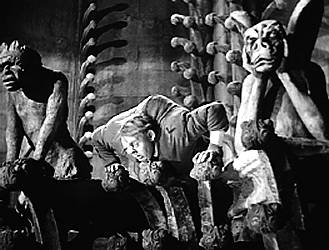

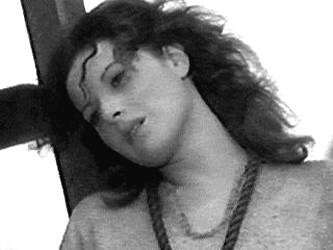
![]() Trama e commenti:
cinematografo.it
-
mymovies.it
-
film.spettacolo.virgilio.it - kataweb.it:
«Dal romanzo Notre-Dame de Paris (1831) di Victor Hugo, portato sullo
schermo nel 1906, 1911,
1917 (con Theda Bara), 1923
(con Lon Chaney), 1956
(con Anthony Quinn), 1982
(TV movie con Anthony Hopkins come Quasimodo), 1996
(33° lungometraggio Disney a disegni animati). Le peripezie della bella zingara
Esmeralda (M. O'Hara), corteggiata dal capo delle guardie Febo (A. Marshall),
sposata per bontà al poeta Gringoire (E. O'Brien, ancora magro), concupita e
condannata a morte dal potente e crudele magistrato Frollo (C. Hardwicke), amata
dal deforme campanaro Quasimodo (C. Laughton) che le dà ospitalità nella
cattedrale della Parigi medievale. Adattata da Sonya Levien e Bruno Frank, è
forse la migliore versione del romanzo, sicuramente la più fastosa (più di 3000
comparse) e la più suggestiva a livello figurativo (splendido bianconero di
Joseph H. August, scene di Van Nest Polglase). L'interpretazione di Laughton fu
molto lodata, ma oggi appare schiacciata dal trucco e dal poco spazio che la
sceneggiatura gli concede per approfondire la psicologia del personaggio. Ne
escono meglio M. O'Hara e C. Hardwicke in una compagnia di attori ben diretti da
un Dieterle che mise a frutto la lezione del grande regista teatrale Max
Reinhardt. Non sono da trascurare, perché inseriti con accorta leggerezza, gli
accenni polemici contro l'oscurantismo, il fanatismo, la violenza, la
discriminazione razziale, implicitamente diretti all'ideologia e alla politica
del nazionalsocialismo».
Trama e commenti:
cinematografo.it
-
mymovies.it
-
film.spettacolo.virgilio.it - kataweb.it:
«Dal romanzo Notre-Dame de Paris (1831) di Victor Hugo, portato sullo
schermo nel 1906, 1911,
1917 (con Theda Bara), 1923
(con Lon Chaney), 1956
(con Anthony Quinn), 1982
(TV movie con Anthony Hopkins come Quasimodo), 1996
(33° lungometraggio Disney a disegni animati). Le peripezie della bella zingara
Esmeralda (M. O'Hara), corteggiata dal capo delle guardie Febo (A. Marshall),
sposata per bontà al poeta Gringoire (E. O'Brien, ancora magro), concupita e
condannata a morte dal potente e crudele magistrato Frollo (C. Hardwicke), amata
dal deforme campanaro Quasimodo (C. Laughton) che le dà ospitalità nella
cattedrale della Parigi medievale. Adattata da Sonya Levien e Bruno Frank, è
forse la migliore versione del romanzo, sicuramente la più fastosa (più di 3000
comparse) e la più suggestiva a livello figurativo (splendido bianconero di
Joseph H. August, scene di Van Nest Polglase). L'interpretazione di Laughton fu
molto lodata, ma oggi appare schiacciata dal trucco e dal poco spazio che la
sceneggiatura gli concede per approfondire la psicologia del personaggio. Ne
escono meglio M. O'Hara e C. Hardwicke in una compagnia di attori ben diretti da
un Dieterle che mise a frutto la lezione del grande regista teatrale Max
Reinhardt. Non sono da trascurare, perché inseriti con accorta leggerezza, gli
accenni polemici contro l'oscurantismo, il fanatismo, la violenza, la
discriminazione razziale, implicitamente diretti all'ideologia e alla politica
del nazionalsocialismo».
![]() Plot Summary, Synopsis, Review:
IMDb -
entertainment.msn.com
-
tvguide.com -
pasadizo.com -
cduniverse.com -
jetcity.com:
«With the
end of the 15th Century, the middle ages came to a close. Europe began to see
great changes. France, ravaged by a hundred years of war, had at last found
peace. People under Louis the XI felt free to hope again ~ to dream of progress,
But superstition and prejudice often stood in the way, seeking to crush the
adventurous spirit of man. Victor Hugo's novel of Fifteenth Century France comes
to life on the screen under the fine direction of William Dieterle and the
splendid efforts of a stellar cast and crew. The conflicts of the poor as the
reigning rich impact their meager existence is profound in this film from scene
one. The prejudice against the horribly misshapen Quasimodo and the
discrimination against the Gypsies entering this shaky society unfolds with the
plot. There in the theater audience you are safe and well-fed, but up on the
screen it seems almost too real for an audience. The genius of Charles Laughton
is not surprising as he becomes the quintessential Quasimodo. Maureen O'Hara's
debut in American films as the beautiful, enchanting Esmarelda was well received
and the beginning of an illustrious career. As an outcast, Quasimodo falls in
love with Esmarelda whose warm and gentle heart sees past his grotesque form and
he then becomes her protector. His solace and sanctuary has always been the bell
tower where he is safe from prying eyes and the ridiculing masses. Now Esmarelda,
falsely accused of a crime depends on Quasimodo to keep her safe as he twice
saves her from death. Unlike the novel, this film has a happy ending, with the
tender Quasimodo watching his Esmeralda ride way with her love. She does,
however, give a glance over her shoulder in reverence and appreciation to her
friend who remains behind...».
Plot Summary, Synopsis, Review:
IMDb -
entertainment.msn.com
-
tvguide.com -
pasadizo.com -
cduniverse.com -
jetcity.com:
«With the
end of the 15th Century, the middle ages came to a close. Europe began to see
great changes. France, ravaged by a hundred years of war, had at last found
peace. People under Louis the XI felt free to hope again ~ to dream of progress,
But superstition and prejudice often stood in the way, seeking to crush the
adventurous spirit of man. Victor Hugo's novel of Fifteenth Century France comes
to life on the screen under the fine direction of William Dieterle and the
splendid efforts of a stellar cast and crew. The conflicts of the poor as the
reigning rich impact their meager existence is profound in this film from scene
one. The prejudice against the horribly misshapen Quasimodo and the
discrimination against the Gypsies entering this shaky society unfolds with the
plot. There in the theater audience you are safe and well-fed, but up on the
screen it seems almost too real for an audience. The genius of Charles Laughton
is not surprising as he becomes the quintessential Quasimodo. Maureen O'Hara's
debut in American films as the beautiful, enchanting Esmarelda was well received
and the beginning of an illustrious career. As an outcast, Quasimodo falls in
love with Esmarelda whose warm and gentle heart sees past his grotesque form and
he then becomes her protector. His solace and sanctuary has always been the bell
tower where he is safe from prying eyes and the ridiculing masses. Now Esmarelda,
falsely accused of a crime depends on Quasimodo to keep her safe as he twice
saves her from death. Unlike the novel, this film has a happy ending, with the
tender Quasimodo watching his Esmeralda ride way with her love. She does,
however, give a glance over her shoulder in reverence and appreciation to her
friend who remains behind...».
![]() Approfondimenti: Movie
Review
Approfondimenti: Movie
Review